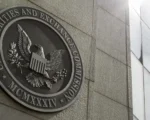Permissionless Blockchains: Open Networks Accessible to Anyone
Basel Committee Raises Concerns About Risks of Permissionless Blockchains: Insights and Solutions
The Basel Committee on Banking Supervision (BCBS) has recently highlighted its concerns regarding permissionless blockchains, which are public networks open to anyone. In a blog post, the BCBS, which sets international banking standards, clarified that its apprehensions are not about the public nature of these blockchains but rather their permissionless aspects. The committee’s blog outlines potential risks and suggests practical measures to mitigate these issues for financial institutions utilizing permissionless blockchains.
Understanding Permissionless Blockchains
Permissionless blockchains, also referred to as trustless or public blockchains, are decentralized networks accessible to anyone with an internet connection. Unlike permissioned blockchains, which impose access restrictions and require approval to participate, permissionless blockchains have minimal restrictions. This open nature allows users to read, submit, and validate transactions without the need for authorization from a central authority. As described by the Federal Reserve Board, these networks consist of distributed computers running identical copies of a shared ledger, with uniform software rules enabling widespread participation.
Potential Risks and Challenges
The primary concerns raised by the BCBS revolve around the inherent risks associated with permissionless blockchains. One significant issue is the lack of centralized oversight, which can lead to challenges in ensuring compliance with regulatory standards and ethical financial practices. The decentralized and open nature of these networks can also make them more susceptible to malicious activities, such as fraud and cyberattacks. Additionally, the anonymity often associated with permissionless blockchains can complicate efforts to track and prevent illicit transactions.

Proposed Solutions
To address these concerns, the BCBS has proposed several solutions aimed at mitigating the risks of permissionless blockchains for financial institutions. One suggestion is the implementation of enhanced monitoring and compliance measures to ensure that transactions conducted on these networks adhere to regulatory standards. Institutions are also encouraged to adopt robust security protocols to protect against potential vulnerabilities and cyber threats. Furthermore, integrating blockchain analytics tools can aid in the detection and prevention of fraudulent activities by providing greater visibility into transaction patterns and network behavior.
Role of Financial Institutions
For financial institutions considering the use of permissionless blockchains, the BCBS emphasizes the importance of conducting thorough risk assessments and developing strategies to manage potential challenges. Institutions are advised to work closely with regulators and industry experts to ensure that their blockchain implementations align with existing financial regulations and best practices. This collaborative approach can help in navigating the complexities of blockchain technology while maintaining regulatory compliance and safeguarding against risks.
The Future of Permissionless Blockchains
As the adoption of permissionless blockchains continues to grow, the BCBS’s guidance will play a crucial role in shaping how financial institutions integrate these technologies into their operations. The ongoing dialogue between regulatory bodies, technology providers, and financial institutions will be essential in addressing the evolving risks and opportunities presented by blockchain technology. By proactively addressing these challenges and implementing recommended solutions, financial institutions can leverage the benefits of permissionless blockchains while minimizing potential risks.
Overall, the BCBS’s focus on permissionless blockchains underscores the need for a balanced approach to integrating innovative technologies into the financial sector. With the right measures in place, permissionless blockchains can offer valuable advantages, such as increased transparency and efficiency, while ensuring that regulatory standards and security requirements are met.

















